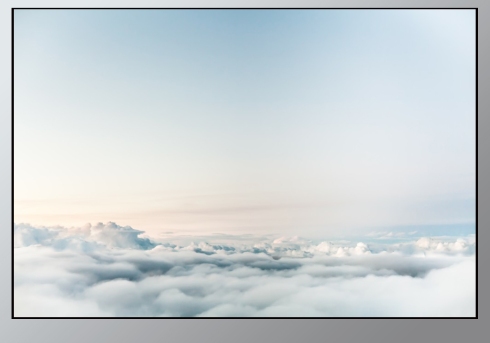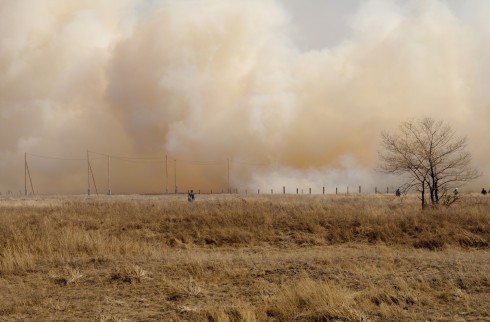By the Saskatchewan.
When the sun has dipt to the westward,
And has reddened the sky with its glow,
When the shadows o’er the soft clouds have deepened,
And the twittering skylarks fly low,
Then I wend my way home o’er the prairie
With a yearning that never does fail
And the mists of the mighty Saskatchewan
Rise, to meet me at the end of the trail.
~ Agnes Krogan

Aerial view of clouds
In the history of this province of Saskatchewan, Canada clouds have heralded both good fortune and terrible, horrendous bad luck. And as thus, does Saskatchewan receive its apt slogan, “Land of Living Skies”.
For instance, take this example of prosperity in the roaring twenties;
“In 1928, Moffat shared with most of Saskatchewan in the bumper crop of the century. We bought a new car, an Essex super 6, with a plush lining and in a beautiful shade of blue, with a dashboard of simulated walnut. What a car! Most of the early cars in Moffat were Model T Fords, but variety was the by-word in the late Twenties. Bertenshaws bought a Flying Cloud, Wolseley Taylor a Nash, Reads a McLaughlin-Buick and Peter Ferguson a little Whippet. Star, Dore, Chevrolet roadster ~ they all appeared during that era. War years and the Twenties”
And yet how does one even imagine the decade of drought in the “Dirty Thirties”, possibly best described by novelist Robert (Paul) Kroetsch ;
“I looked back just once and the sky in the west was positively black. AS if a great fist had closed the sun’s eye. As if a range of mountains had broken loose and was galloping straight at me. The whole west was one great galloping cloud of smothering dust. I reached to turn on the lights.
And the the shiver turned to elation. Because I saw the windshield again. A drop of rain had hit the windshield. A drop of genuine water. Even while I was watching, right before my eyes, a second drop hit.
My bowels melted. That’s when I first realized: I had forgotten what a rain cloud looks like.~Paustian, Shirley I. ”
“So, while we learned the most obvious lesson of the Dust Bowl – that is, how to retain soil on dry farmland – we have yet to learn the larger lessons: how to respect nature’s limits, and how to use natural processes to buffer drought’s impacts.” Kendy
Another devastation befalling the Saskatchewan prairies in cycles as regular as drought are the grasshoppers as described by Henry Youle Hind,a Canadian geologist and explorer:
“On the second of July [1858] we observed the grasshoppers in full flight towards the north, the air as far as the eye could penetrate appeared to be filled with them. They commenced their flight about nine in the morning, and continued until half-past three or four o’clock in the afternoon. After that hour they settled around us in countless multitudes, and immediately clung to the leaves of the grass and rested after their journey. On subsequent days when crossing the great prairie from Red Deer’s Head River to Fort Ellice, the hosts of grasshoppers were beyond all calculation: they appeared to be infinite in number. Early in the morning they fed upon the prairie grass, being always found most numerous in low, wet places where the grass was long. As soon as the sun had evaporated the dew, they took short flights, and as the hour of nine approached, cloud after cloud would rise from the prairie and pursue their flight in the direction of the wind, which was generally S.S.W. The number in the air seemed to be greatest about noon and at times they appeared in such infinite swarms as to lessen perceptibly the light of the sun. The whole horizon wore an unearthly ashen hue from the light reflected by their transparent wings. The airs was filled as with flakes of snow, and time after time, clouds of these insects forming a dense body casting a glimmering silvery light, flew swiftly towards the north-north-east, at altitudes varying from 500 to perhaps 1000 feet.” Hawkes

Grasshopper
On the prairies, it is seen that the collective swarming behavior of grasshoppers is their survival mechanism in times of dry weather and food is scarce. Again, a healthy respect for nature, nourishing the land, preserving water all goes a long way to mitigate ruination, and defoliation of a crop.
However, the plight of the pioneer does not end with clouds of dust, nor clouds of grasshoppers. The early homesteader had to be on the look out for clouds of smoke on the horizon, signalling a massive grass fire approaching. A fire which could range in length for hundreds of miles devouring everything in its path.
“A hazard far less innocent than the howl of a prairie wolf or the wandering of livestock, however, was the menace of the prairie fire. The threat was a serious one during the warm days of spring and fall, when the grass was dry. The fall was a particularly hazardous time, when the September days were often hot and windy, and the whole country was covered by crisp prairie “Wool” and clumps of aspen and willows as inflammable as a vast timber box. Once started under such conditions a fire created its own wind and augmented any that already existed, and the results could often be tragic in a new and sparsely settled country. The most spectacular and dangerous fire in the history of our community….began in the Turtleford area…from a bush-burning operation, and once out of control it galloped wildly across the country at the speed of a race horse, in long, flaming tongues that beggared description. There was little or no defence against such a fire. The almost horizontal lead flames might be thirty to fifty fee long, with flying sparks, and small brands still farther in advance of the main fire. In the face of such an onslaught, the ordinary “Fire-guards” and sounds of men equipped with horses, water barrels, and wet burlap sacks for beating out the flames were hopelessly inadequate. Often during the spring or fall, large areas of the sky would be red with the reflections of grass fires. When the air was cool, moist and quiet, large scale danger was minimal, but especially for children the angry looking red cloud reflections of a prairie fire were always an awesome and frightening sight.”Wooff

Image of a small grass fire across the fields
In retrospect, those who reside in Saskatchewan welcome the spring clouds nourishing the crops in the field. The horrific and massive dangers of drought, prairie fire, and grasshopper are largely diminished because of adapted agricultural practices and lessons have been hard learned.
As did Joni Mitchell we, also, have “looked at clouds from both sides now, from up and down…from win and lose” and from it all, the resilient pioneer had many tales to tell about Winning the Prairie Gamble.
Genealogy hint and tip: In regards to stories from your ancestors, please peruse the Saskatchewan local history books. To discover which book may be useful, try the Saskatchewan Resident’s Index offered by the Saskatchewan Genealogy Society. Or find your pioneer’s homestead location, locate the legal land location on an historic map. On the map ascertain the closest place name to the homestead and use this information to search an online library database listing. Solicit the assistance of some kind soul on a posting board, a mailing list, or just offering to do a look – up or by wander down to your library and use their reference room. Discover which here ~ ordered alphabetically by SK place name with relevant Sask Gen Web region. Rural Municipality offices or regional museums may know if any local history books of the province’s 50th and 75 anniversary (1955 and 1980) may yet be available for purchase, or if the community wrote a new one for the 100th provincial anniversary of 2005.
~written by Julia Adamson webmaster Sask Gen Web
“The fact that we have a Sahara (desert) is not entirely tragic. The very existence of the Sahara gives to the whole world a highly valuable lesson in ecology. It teaches us what not to do with a perfect countryside. The drifting sands and stony wastes tell us more eloquently than words, what will happen when we break certain natural laws. We cannot remove tree cover without running the risk of losing the blessing of the water cycle. We cannot denude the earth’s surface without creating the desiccation of sand the dust dunes. We cannot permit animals to devour whatever little is left of green growth. Excessive grazing of cattle, sheep and goats is as damaging to the land as a wholesale felling of trees…´ from Desert Challenge ~ Richard St. Barbe Baker
BIBLIOGRAPHY:
Hawkes, John. Saskatchewan and its People on Sask Gen Web Volume I, II, III
Illustrated. Chicago – Regina. The S.J. Clarke Publishing Company. 1924.
Kendy, Eloise Ph.D.
Water Helping Nature Protect Us From Drought
The Nature Conservancy.
Krogan, Agnes E. Thorbergson. And a church was built.
Mulitgraph Service Saskatoon, Saskatchewan.
Paustian, Shirley I. (Shirley Irene)Depression, 1929-1939, in the Prairie provinces of Canada.
War years and the twenties. They cast a long shadow: the story of Moffat, Saskatchewan.
Wooff, John. Harbinger Farm 1906-1920 Modern Press. Regina, Saskatchewan.

Leave a comment